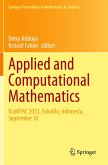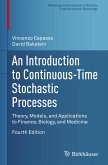This contributed volume explores innovative research in the modeling, simulation, and control of crowd dynamics. Chapter authors approach the topic from the perspectives of mathematics, physics, engineering, and psychology, providing a comprehensive overview of the work carried out in this challenging interdisciplinary research field.
The volume begins by focusing on modeling at the macroscopic and microscopic scales, with chapters demonstrating how stress conditions evolve in time and space and influence pedestrian dynamics, particularly regarding high density patterns. Different aspects of behavioral dynamics are considered in the following chapters, which explore how mathematical models can incorporate parameters that capture shifts in people s mental states. The final two chapters go beyond the usual modeling-based assumptions, discussing how control problems can be developed using drones to guide crowds and methods for interpreting crowd behavior using artificial intelligence, respectively.
Crowd Dynamics, Volume 5 is ideal for mathematicians, engineers, physicists, and other researchers working in the rapidly growing field of modeling and simulation of human crowds.
The volume begins by focusing on modeling at the macroscopic and microscopic scales, with chapters demonstrating how stress conditions evolve in time and space and influence pedestrian dynamics, particularly regarding high density patterns. Different aspects of behavioral dynamics are considered in the following chapters, which explore how mathematical models can incorporate parameters that capture shifts in people s mental states. The final two chapters go beyond the usual modeling-based assumptions, discussing how control problems can be developed using drones to guide crowds and methods for interpreting crowd behavior using artificial intelligence, respectively.
Crowd Dynamics, Volume 5 is ideal for mathematicians, engineers, physicists, and other researchers working in the rapidly growing field of modeling and simulation of human crowds.








